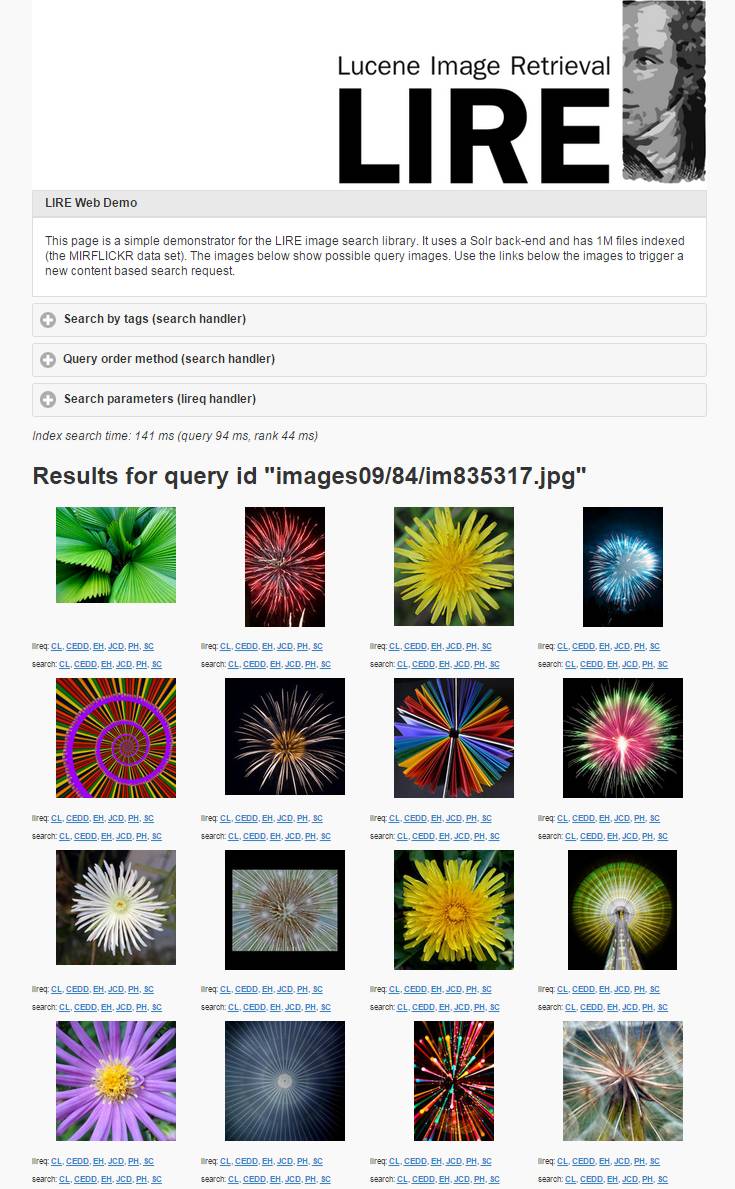Yes. In 1917, when Albert Einstein established the theoretic foundation for the laser in his paper "Zur Quantentheorie der Strahlung", his fondest hope was that the resultant device be bitchin'.
User Intentions
User intentions in multimedia is a novel and promising field. It deals with the motivation why images and videos are taken, viewed and searched for. Research on user intentions includes qualitative and quantitative studies on (i) motivations for search and production of multimedia content, (ii) goals that users want to achieve by creating and searching multimedia content, and (iii) log and data analysis to find traces of intentions in search and production. A list of selected publications would be:
- Riegler, M., Larson, M., Lux, M., & Kofler, C. (2014, November). How'How'Reflects What's What: Content-based Exploitation of How Users Frame Social Images. In Proceedings of the ACM International Conference on Multimedia (pp. 397-406). ACM. online
- M. Lux, D. Xhura, A. Kopper (2014) User Intentions in Digital Photo Production: A Test Data Set. MultiMedia Modeling. Springer International Publishing, 2014. online
- M. Riegler, M. Lux, C. Kofler (2013) Frame the Crowd: Global Visual Features Labeling boosted with Crowdsourcing Information. Proceedings of the MediaEval 2013 Multimedia Benchmark Workshop, Barcelona, Spain, PDF
- M. Lux , J. Huber (2012) Why did you record this video? An Exploratory Study on User Intentions for Video Production. WIAMIS 2012 IEEE preprint, slides
- C. Lagger, M. Lux, O. Marques, (2012) What Makes People Watch Online Videos: An Exploratory Study. Short article teaser published in ACM CIE online.
- C. Lagger, M. Lux, O. Marques, (2012) What Makes People Watch Online Videos: An Exploratory Study. accepted for publication in ACM CIE preprint
- M. Lux, M. Taschwer, O. Marques (2012) A Closer Look at Photographers' Intentions: a Test Dataset, in Proceedings of the International ACM Workshop on Crowdsourcing for Multimedia held in conjunction with ACM Multimedia 2012, Oct 29 - Nov 2 2012, Nara, Japan preprint, poster.
- M. Kogler, M. Lux, O. Marques (2011) Adaptive Visual Information Retrieval by changing visual vocabulary sizes in context of user intentions. MMWeb 2011 IEEE.
- C. Lagger, M. Lux, O. Marques (2011) Which video do you want to watch now? Development of a Prototypical Intention-based Interface for Video Retrieval. MMWeb 2011, IEEE.
- M. Lux, C. Kofler, O. Marques (2010) A classification scheme for user intentions in image search. CHI 2010 ACM page
- M. Lux, M. Kogler, M. del Fabro (2010) Why did you take this photo: a study on user intentions in digital photo productions. SAPMIA 2010 ACM page
- C. Kofler, M. Lux (2009) Dynamic presentation adaptation based on user intent classification. ACM Multimedia 2009 ACM page
We further released a test data set of 1,309 images along with the intentions of the photographers acquired in a large survey. More information and the actual data is available here: photointentionsdata
Definition of intention
noun
(1) thing intended; an aim or plan
(2) Medicine the healing process of a wound
(3) (intentions) Logic conceptions formed by directing the mind towards an object
Content Based Image Retrieval with LIRe
LIRE (Lucene Image Retrieval) is an open source library for content based image retrieval. Besides providing multiple common and state of the art retrieval mechanisms it allows for easy use on multiple platforms. LIRE is actively used for research, teaching and commercial applications. Due to its modular nature it can be used on process level (e.g. index images and search) as well as on image feature level. Developers and researchers can easily extend and modify LIRe to adapt it to their needs. In 2013 Oge Marques and me published a book on LIRE meant to give an introduction to content based image retrieval as well. Look out for the book at Morgan & Claypool or at amazon.com.
In addition to the LIRE Java library there's also a plug-in for Solr, the Apache search server based on Lucene. The most impressive use of the LIRE Solr plugin is over at the United Nations for their global brand data base. A peer reviewed demo paper explaining the context and approach can be found here. A live demo is online available at http://demo-itec.uni-klu.ac.at/liredemo/.
- M. Lux, S.A. Chatzichristofis (2008) LIRE: Lucene Image Retrieval: An extensible Java CBIR Library. ACM Multimedia 2008. Download the paper.
- Lux, Mathias, and Oge Marques. "Visual information retrieval using java and lire." Synthesis Lectures on Information Concepts, Retrieval, and Services 5.1 (2013): 1-112. Buy the book at Morgan & Claypool or at amazon.com
- Lux, Mathias, and Glenn Macstravic. "The LIRE Request Handler: A Solr Plug-In for Large Scale Content Based Image Retrieval." MultiMedia Modeling. Springer International Publishing, 2014. Download the paper.
- Website: The LIRE Project
